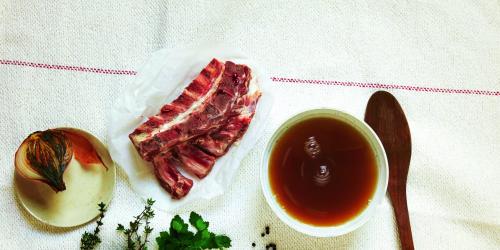The classics
Industrial
The "nature"
Counterfeiters
I remember
The "paradox of churros"
Sugar, I love?
We all have this penchant: the sweet is the favorite flavor of the French in front of the salty (49% against 48% **). This natural appetite is, in the beginning, a survival story : the baby is irresistibly attracted to the sweet taste of breast milk. Growing up, this taste continues because it "is necessary , assures Dr. Jean-Michel Lecerf, endocrinologist and head of the nutrition department at the Pasteur Institute of Lille. It instinctively drives us to look for sugar , which turns into glucose in the blood, the first fuel of the brain and muscles . " This would be 1 g per liter of blood permanently . Except that when this physiological need develops to the point of turning to shameless greed , we risk the extra pounds . How? " Increasing blood sugar (blood glucose) causes insulin to rise. It regulates the glucose level to keep it at the right dose. This insulin is also responsible for the storage of fat in fat cells but also cravings that push us to nibble, "says Dr. Lecerf. To reduce this storage phenomenon, it is sufficient to limit these peaks of blood sugar, sorting among the multitude of sugars available on the shelves.
* Author of "New GI Diet. Losing weight by controlling your blood sugar "," and "100 GI foods at will," ed. Thierry Souccar.
** Source: Ipsos survey.
The classics
White sugar
It is sucrose, made from sugar beet or sugar cane . Except that during the various treatments he undergoes, he loses practically all his minerals and vitamins.
Impact kilos: huge. Because sucrose is transformed very quickly into glucose and contributes to blood sugar peaks involved in weight gain.
We use it ... as little as possible. A bit of coffee or pastry does not hurt too much. But as soon as you can find an alternative, plan B is better.
Fructose.
It is the fruit sugar. It is also found powdered in dietary rays. It can be used as powdered sugar.
Impact kilos: very moderate. It provides as many calories as sugar but has a much lower glycemic effect (it is even allowed for diabetics).
It is used ... to replace sugar in coffee, jams , compotes, pastries, pancakes or waffles ... by dividing by 2 quantities because it has a stronger sweetening power. And not always: "In excess, fructose is stored in the liver and may create metabolic disorders," warns Dr. Lecerf.
The brown sugar.
Beware, fake friend ! It is only a little less refined white sugar , containing 85 to 98% sucrose. It is also called brown sugar . The blond sugar is caramelized white sugar.
Impact kilos : the same as white sugar.
It is used ... for its small caramel note , in tea or coffee, but not too often.
Industrial
Glucose syrup.
We find this " sugar syrup " mainly in biscuits , industrial pastries ... Liquid, it is easy to work and gives a very marked sweet note.
Impact kilos: maximum. As it is already "ready to be absorbed" by our body, we are quickly in hyperglycemia . And 2 hours later, we have a craving.
We use it ... as little as possible. There is no need, however, to feel guilty for some bonbecs from time to time. It's a daily consumption that hurts the scales.
The "nature"
Agave syrup.
Extracted from the sap of a cactus , it comes in the form of an amber syrup. It contains 70% fructose. And his taste is quite neutral.
Impact kilos: low. Of all the sugars, it is one of those that disrupt the blood sugar ...
We use it ... as soon as we can. In yogurts , but also pastry recipes, by replacing 100 g of sugar with 75 g of agave syrup (Bjorg, Sunny Via ...).
Honey.
Naturally composed of several sugars (fructose, glucose, sucrose ...), it contains vitamins, minerals, amino acids, antioxidants ...
Impact kilos: quite close to that of white sugar if we compare its action on blood sugar. Less caloric and richer in vitamins, it remains a convincing alternative.
We use it ... easily. A spoon. to c. of honey in a yogurt or a white cheese. And pastry, we put less than sugar since 65 g of honey = 100 g of sugar.
The rapadura.
This whole cane sugar is an unrefined sugar. It contains mainly sucrose, like white sugar, but retains more minerals and vitamins.
Impact kilos: a little less than white sugar thanks to its minerals and fibers that slow down its transformation into glucose.
We use it ... to sweeten its yogurt. A spoonful of rapadura is better than white sugar. Also nice (to taste) in a cup of strawberries, herbal tea or a pancake, but it goes rather badly in the coffee because of its taste of caramel and licorice. In pastry, it is swapped for sugar, in equal parts.
Counterfeiters
Aspartame.
It is an artificial sweetener whose sweetening power is 200 times higher than that of sugar . Its best asset: zero calories and no impact on blood sugar. But its "chemical" nature makes it suspect. In fact, the recent publication of two studies evoking a carcinogenic effect (in rats) and a possible link with premature births raises doubt. Nevertheless, health authorities relying on hundreds of other studies continue to authorize it, at the maximum dose of 40 mg per day / kg of weight . Or, for a person of 60 kg, about 30 cans of light drink or 300 tablets per day ...
Impact kilos: perverse ... Of course, a priori, replace its sugar with a sweetener, it's better. But this barter is not a pass for the country of sweets on the pretext that the drink, it was light ...
It is used ... instead of sugar in coffee, yogurts, strawberries but less in pastry. Even though aspartame is heat-resistant, it loses some of its sweetening power, and the result is often disappointing.
Stevia.
Products marketed in France use an isolated extract of this plant with sweet leaves: rebaudioside A. "Its leaves have been used for a long time as a sweetener, but there is still a lack of perspective on this molecule," says Angélique Houlbert.
Impact kilos: identical to aspartame.
It is used ... in the form of powder, pastilles (Canderel Green, Pure Via ...) and even pieces imitating the square of sugar (Truvia), it can be used for everything if you like its taste of liquorice . In pastry, we replace 100 g of sugar with 10 g of stevia.
Birch xylitol.
Extracted from birch bark, this sweetener is part of the polyol family and has anti-aging properties . It is found in powder, under the brand name Vivis or in organic shops.
Impact kilos: It is half as much caloric as sugar and does not cause a blood sugar spike ... it is a very good plan B sugar.
It is used ... to sweeten everything : coffee, tea, yogurt ... It can be used in pastry, provided to reduce the quantities by 30 to 50%. But we do not adopt it systematically. Like all polyols (also present in chewing gums and sweets without sugar), beware of bloating and other digestive problems if you consume too much!
I remember
The higher the glycemic index of a sugar, the more it contributes to weight gain. Below 35, it is weak; from 35 to 50, it is moderate; more than 50, he is high.
Glucose syrup: 100
Rapadura: 70
White sugar: 68
Honey (lambda): 62
Agave syrup: 22
Fructose: 20
Birch Xylitol: 8
Aspartame and stevia: 0
The "paradox of churros"
One can act on the glycemic index of a sweet food. In particular by adding to the sugar fats and proteins that slow down its transformation into glucose. This is why churros, for example, are caloric bombs, but their glycemic index is "only" 60.


